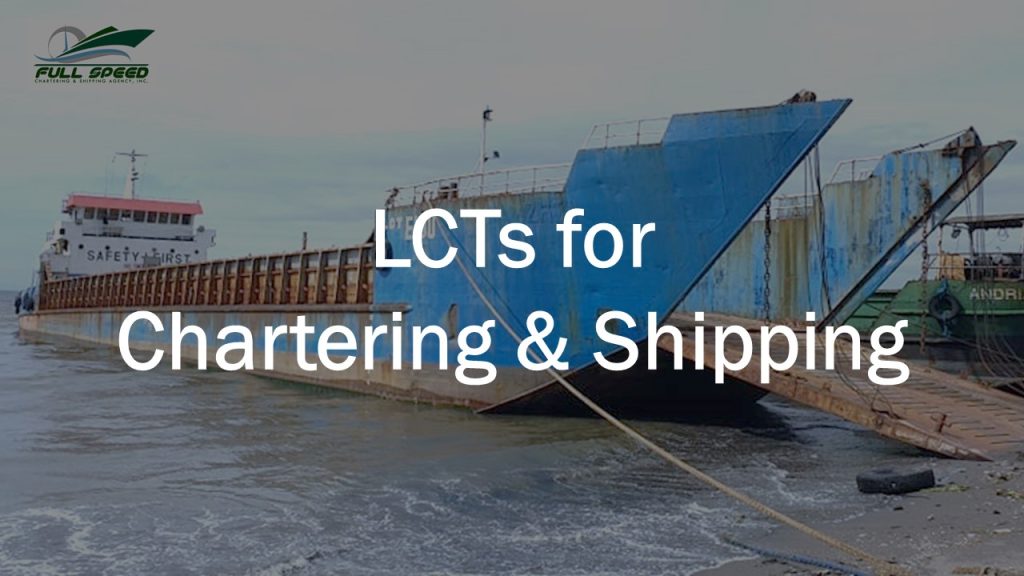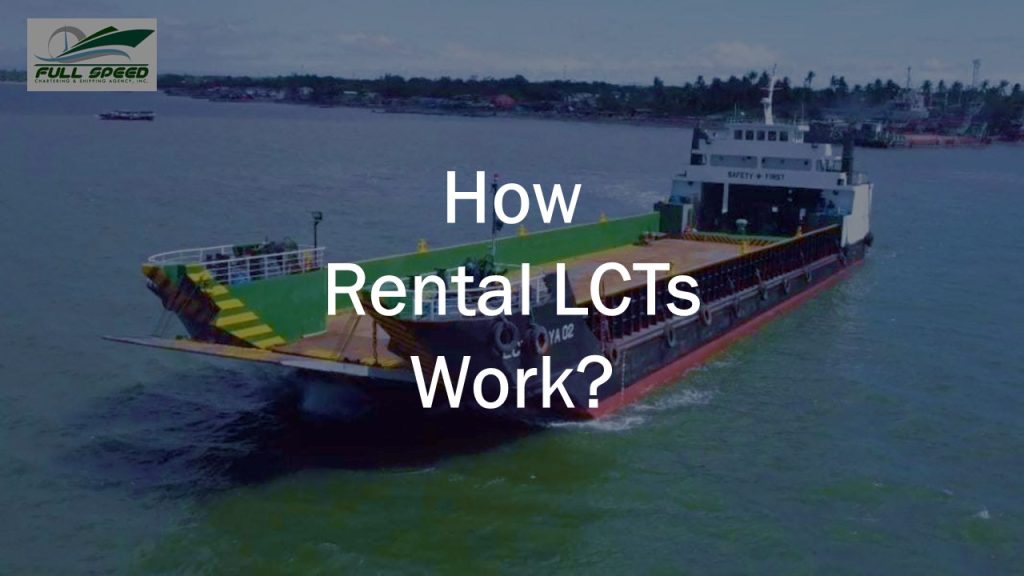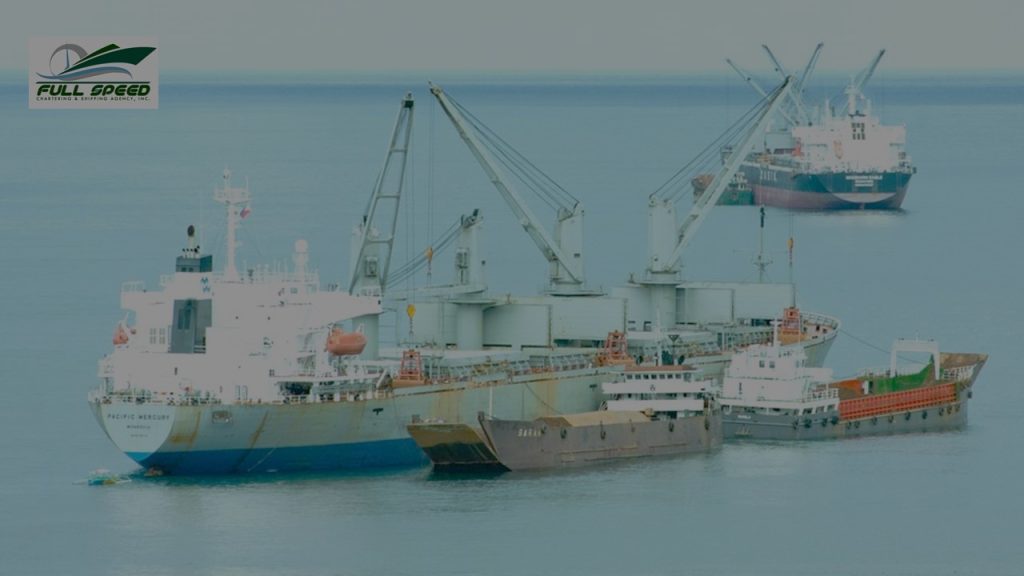Landing Craft Tanks, or LCT vessels, have become an integral part of maritime operations in the Philippines due to their versatility and adaptability. These specialized vessels are designed to transport heavy equipment, vehicles, and cargo from shore to shore, making them essential for logistical support during military exercises and disaster relief efforts. With their unique features and capabilities, LCT vessels have revolutionized the way goods and personnel are transported across waterways in the archipelago nation. In this article, we will explore the different types of LCT vessels commonly found in the Philippines and delve into their specific functions and roles in various sectors.
Click here to view our rental LCT vessel in the Philippines.
Definition: What is an LCT Vessel?
LCT vessels, short for Landing Craft Tanks, are a type of ship designed for transporting tanks, vehicles, and cargo from shore to shore. These vessels are specifically constructed with a large open deck that allows for the easy loading and unloading of heavy equipment. LCTs typically have a bow ramp or door that can be lowered to create a shallow draft and facilitate the movement of vehicles directly onto land.
What sets LCT vessels in the Philippines apart from other types of cargo ships is their ability to navigate in shallow waters and even beach themselves on sand or mud without sustaining damage. This makes them ideal for military operations and disaster relief efforts where access to remote or austere areas may be required. The simplicity and versatility of LCT vessels have also made them popular among construction companies tasked with transporting heavy machinery between waterfront construction sites.
In recent years, the demand for larger and more advanced LCT vessels has grown in the Philippines due to its numerous islands and complex coastal geography. These ships play a vital role in connecting communities across the archipelago by providing essential transportation services for both people and goods. As such, understanding the various types of LCT vessels available in the Philippines is crucial, as they contribute significantly to the country’s economic development, infrastructure projects, tourism industry, and national security initiatives.
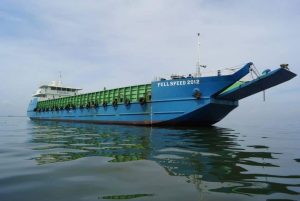
Overview of LCT Vessels for Cargo Shipping in the Philippines
The Philippines is known for its vibrant and bustling cargo shipping industry, with many different types of vessels being used to transport goods across the archipelago. One of the popular choices for cargo shipping in the Philippines is LCT vessels. LCT, which stands for Landing Craft Tank, is a versatile type of vessel that can transport various types of cargo, from construction materials to heavy machinery.
LCT vessels have several key features that make them ideal for cargo shipping in the Philippines. Firstly, their flat-bottomed design allows them to access shallow waters and navigate through narrow channels, which is particularly important given the country’s geography. Additionally, LCT vessels have open-deck layouts that allow for easy loading and unloading of cargo. This makes them suitable for transporting oversized or bulk goods that may not fit onto other types of vessels.
Furthermore, LCT vessels are equipped with onboard cranes or ramps, enabling them to self-load and unload cargo without relying on external equipment. This flexibility significantly reduces operational costs and increases efficiency in cargo handling operations. The versatility of LCT vessels also extends to their ability to accommodate both roll-on/roll-off (Ro-Ro) and lift-on/lift-off (Lo-Lo) operations, depending on the nature of the cargo being transported.
LCT vessels play a crucial role in facilitating efficient and cost-effective cargo shipping in the Philippines. Their unique design features allow them to navigate through challenging waters while offering flexible loading and unloading capabilities.
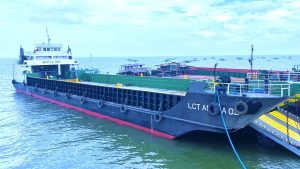
Overview of LCT Vessels for Mining in the Philippines
LCT vessels, or Landing Craft Tank vessels, have become an indispensable asset in the mining industry in the Philippines. With their unique design and capabilities, they have revolutionized the transportation of heavy equipment and materials to remote mining sites across the archipelago. These vessels are specifically designed to carry massive loads and can easily access shallow beaches where traditional bulk carriers cannot venture.
One key advantage of LCT vessels for mining is their exceptional maneuverability. Their flat-bottom design allows them to navigate through narrow rivers and tributaries, reaching even the most hidden mines in hard-to-reach locations. Furthermore, LCTs are built with powerful propulsion systems that enable them to tackle strong currents and adverse weather conditions, ensuring a reliable transport service for mining companies regardless of external factors.
Additionally, LCT vessels offer substantial cost savings compared to other types of transport modes commonly used in the mining industry. Traditional methods like trucking or airlifting impose high expenses due to maintenance costs or fuel consumption. By utilizing LCTs, companies can significantly reduce logistics expenses while increasing overall efficiency.
In conclusion, LCT vessels have transformed how mining operations are conducted in the Philippines by providing a reliable solution for transporting heavy equipment and materials to remote sites efficiently. Their maneuverability, robustness against adverse weather conditions, and cost-saving potential make them an invaluable asset for any mining company operating in this challenging terrain.
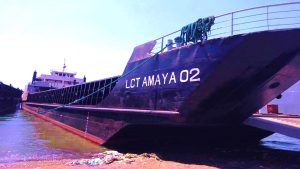
Overview of LCT Vessels for Construction in the Philippines
One of the most popular types of vessels used for construction in the Philippines are LCT (Landing Craft Tank) vessels. These versatile and robust ships are specifically designed to transport heavy equipment, materials, and vehicles to remote and shallow areas where traditional ports may not be accessible. LCT vessels in the Philippines have a flat deck that can accommodate large cargo loads, making them perfect for construction projects in coastal regions.
What sets LCT vessels apart is their unique ability to beach or ground themselves without the need for docks or ports. This allows operators to easily access challenging locations, such as islands with limited infrastructure or undeveloped shorelines. By being able to dock directly on shore, construction crews can swiftly unload their equipment and materials, expediting project timelines.
LCT vessels also offer superior stability compared to other vessel types due to their wide-beam design. This makes them ideal for transporting heavy machinery and equipment required in construction activities such as earthworks, land reclamation, or marine structure development. With their versatility and adaptability, LCT vessels have become an essential tool for various industries involved in construction projects across the Philippines’ archipelago nation.
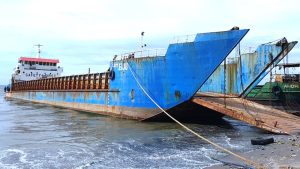
Overview of LCT Vessels for Oil and Gas in the Philippines
Landing Craft Tank (LCT) vessels play a crucial role in the oil and gas industry in the Philippines. These heavy-duty vessels are specifically designed to transport large quantities of goods, equipment, and vehicles between offshore platforms, ports, and onshore facilities. They are known for their versatility, efficiency, and capacity to navigate shallow waters.
The use of LCT vessels in the oil and gas sector not only allows for cost-effective transportation but also enables easier access to remote areas where traditional ships cannot reach. Moreover, these vessels can accommodate a wide variety of cargo types, including oil rigs, drilling equipment, pipelines, fuel tanks, and construction materials.
In recent years, there has been an increased focus on developing LCT vessels with advanced technology and environmentally friendly features. This includes the use of low-emission engines and fuel-efficient systems to reduce carbon footprints during transportation operations. As the demand for oil and gas continues to grow in the Philippines, it is expected that further advancements will be made in LCT vessel design and functionality to meet industry requirements while minimizing impact on the environment.
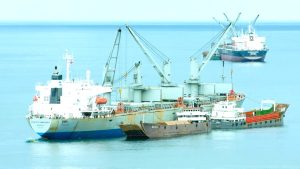
Types of LCT Vessels in the Philippines
LCT vessels, also known as Landing Craft Transport vessels, are incredibly vital to the maritime industry in the Philippines. These versatile vessels come in various types and serve multiple purposes, making them a crucial component of transporting goods and people across the country’s numerous islands.
1. Roll-on/Roll-off (Ro-Ro) vessels: Efficient transportation for wheeled cargo
Roll-on Roll-off (Ro-Ro) vessels have revolutionized the transportation of wheeled cargo in the Philippines. These specialized ships are designed with built-in ramps that allow vehicles to simply roll on and off the vessel, eliminating the need for cranes or other lifting equipment. This makes them incredibly efficient for loading and unloading operations, saving both time and money.
One of the key advantages of Ro-Ro vessels is their ability to transport a wide range of wheeled cargo, including cars, trucks, trailers, and even heavy machinery. They provide a safe and secure way to transport these vehicles over long distances without risk of damage or theft.
Additionally, Ro-Ro vessels offer flexibility in terms of route planning. With their ability to dock at multiple ports along a coast or between different islands in the Philippines, they can connect regions that would otherwise be difficult to reach by land transport alone. This opens up new trade routes and opportunities for economic growth in various areas.
Ro-Ro vessels are an essential part of modern shipping infrastructure. Their efficient design and versatility make them an ideal choice for transporting wheeled cargo over both short distances within a country’s borders and longer hauls between different regions or even countries. Whether it’s transporting cars from one city to another or moving heavy machinery across oceans, these vessels play a crucial role in keeping global trade flowing smoothly.
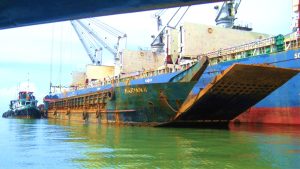
2. Container vessels: Ideal for transporting standardized cargo units in the Philippines
Container vessels are the backbone of global trade, and they play a crucial role in transporting standardized cargo units in the Philippines. These vessels are designed to carry large quantities of goods efficiently and securely across oceans. They offer several advantages over other types of vessels, making them ideal for businesses engaged in international trade.
One key advantage is their ability to transport a variety of standardized cargo units, such as containers and pallets. These cargo units can be easily loaded, unloaded, and transferred from one mode of transportation to another without the need for repacking or handling individual items. This not only saves time but also reduces the risk of damage during transit.
Furthermore, container vessels have revolutionized the logistics industry by introducing intermodal transportation systems. With these systems, cargo can be seamlessly transported from point A to point B using various modes of transportation like ships, trains, and trucks without any manual handling or repackaging along the way. This level of efficiency ensures quicker delivery times and lower costs for businesses involved in international trade.
Container vessels have become indispensable in transporting standardized cargo units in the Philippines due to their ability to efficiently move large quantities of goods while minimizing risk during transit. The advent of intermodal transportation systems has further enhanced their effectiveness by streamlining logistics processes and reducing delivery times. As global trade continues to grow exponentially, these vessel types will continue to play a vital role in facilitating commerce across borders.
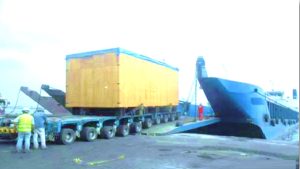
3. Bulk carriers: Optimal for transporting bulk commodities in the Philippines
Bulk carriers are undoubtedly the workhorses of the maritime industry when it comes to transporting bulk commodities in the Philippines. With their large cargo holds and efficient loading and unloading processes, these versatile vessels have revolutionized trade in the country. They specialize in carrying dry goods such as coal, grains, ore, and cement, enabling industries to thrive by ensuring a steady supply of essential resources.
One key advantage of bulk carriers is their ability to transport massive volumes of cargo in a single voyage. This not only reduces shipping costs but also minimizes the environmental impact associated with multiple trips. Additionally, these ships are equipped with advanced technology and infrastructure that optimize cargo handling procedures, enabling quick loading and unloading times at ports throughout the Philippines.
Moreover, bulk carriers provide an essential link between producers and consumers by acting as a reliable means for transporting raw materials from one region to another. For example, they play a crucial role in moving agricultural products like rice or sugar from rural areas to urban centers where demand is high. This efficient distribution system ensures that both producers and consumers can access necessary goods without facing significant delays or logistical challenges.
Bulk carriers serve as vital instruments for facilitating domestic commerce in the Philippines. By efficiently transporting bulk commodities across regions while reducing costs and impacting climate change less than alternative methods like multiple smaller vessels or road transportation alone do – they play a significant role in driving economic growth across the country.
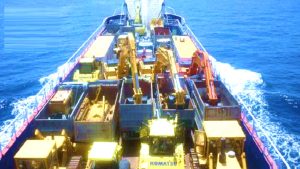
4. General cargo vessels: Versatile option for various types of cargo in the Philippines
General cargo vessels are a versatile option for transporting various types of cargo in the Philippines. These vessels are capable of carrying a wide range of goods, from everyday consumer products to heavy machinery and equipment. One key advantage of general cargo vessels is their flexibility, as they can be customized to accommodate different types of cargo and provide specialized handling solutions.
In the bustling ports of the Philippines, general cargo vessels play a crucial role in supporting the country’s economy by transporting goods both domestically and internationally. With their adjustable deck configurations and efficient loading and unloading systems, these vessels are able to optimize space utilization and ensure that every inch of the ship is used effectively. This not only maximizes efficiency but also minimizes transportation costs, making general cargo vessels an economical choice for businesses looking to move their products.
Whether it’s perishable goods that need temperature-controlled storage or oversized items that require special handling techniques, general cargo vessels offer the necessary infrastructure and expertise to transport diverse cargoes safely. Moreover, with advancements in technology such as IoT tracking systems and data analytics, shippers can now have real-time visibility into their cargo’s location and condition throughout their journey on board a general cargo vessel. This level of transparency provides peace of mind for both businesses and customers alike, ensuring timely deliveries while also allowing for proactive problem-solving in case any issues arise during transit.
General cargo vessels prove themselves as an invaluable asset in facilitating international trade for the Philippines.
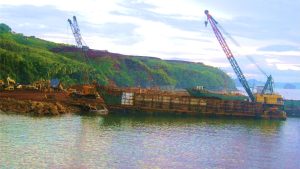
5. Heavy lift vessels: Specialized for transporting oversized and heavy cargo in the Philippines
Heavy lift vessels, also known as heavy-lift ships, are a specialized type of vessel designed specifically for the transportation of oversized and heavy cargo. These unique vessels have powerful cranes and extra strength to handle massive loads that cannot be accommodated by conventional cargo ships. In the Philippines, heavy lift vessels play a vital role in the transport of a wide range of cargoes, including industrial equipment, oil rig components, construction machinery, and even entire prefabricated structures.
What sets heavy lift vessels apart is their impressive lifting capacity. Equipped with state-of-the-art cranes capable of hoisting several hundred tons at a time, these ships can transport extremely bulky cargo that would typically require dismantling or multiple shipments if transported by other means. The versatility offered by heavy lift vessels makes them an essential asset in various industries such as construction, energy production, and offshore exploration.
Not only do heavy lift vessels offer impressive load-carrying capabilities, but they are also equipped with advanced safety features to ensure the secure transportation of delicate goods. Specialized cranes with synchronous lifting systems allow for controlled movements and minimize sway during operations. Additionally, these vessels often have ballast control systems to stabilize the ship’s balance while loaded.
Heavy lift vessels in the Philippines serve as a crucial means for transporting oversized and heavyweight cargo efficiently and safely. Their ability to handle enormous loads, combined with advanced lifting technologies, has revolutionized logistics in various industries.

6. Landing Craft Utility (LCU) in the Philippines
In the tropical archipelago of the Philippines, one vessel that plays a crucial role in military operations and humanitarian missions is the Landing Craft Utility (LCU). Designed for amphibious operations, LCU vessels provide a versatile means of transporting troops, equipment, and supplies to remote and hard-to-reach areas. What sets them apart from other LCT vessels is their unique ability to load and unload directly onto beaches.
The LCU vessels in the Philippines are often utilized by both the Philippine Navy and Philippine Marine Corps. They serve as an essential component in disaster response efforts, particularly during typhoons or other natural disasters. Their capacity to operate on various types of terrain makes them invaluable in reaching affected communities quickly. Additionally, this versatile craft also contributes significantly to inter-island transportation for people living in remote coastal areas with limited access to traditional forms of travel.
Despite their indispensable role in military and humanitarian endeavors, LCUs face some challenges within the Philippines. One major concern is maintaining their seaworthiness due to corrosion caused by saltwater exposure. Regular maintenance becomes critical for ensuring long-term functionality and reliability. Moreover, amidst modern technological advancements such as air transportation dominating disaster response efforts, it’s important not to overlook the significance of LCUs’ unique capabilities that allow for agility and swift deployment in times of crisis.
From responding to natural disasters to facilitating inter-island transportation where no roads exist, Landing Craft Utility vessels remain an integral part of maritime operations in the Philippines.
Are You Looking for LCT Vessels in the Philippines?
If you are in need of LCT vessels in the Philippines, Full Speed Chartering and Shipping Agency, Inc. (FSCSAI) is your go-to provider. With a wide range of well-maintained and cost-effective options, FSCSAI can meet any of your LCT vessel requirements.
- Email us: info@fullspeedchartering.com
- Mobile, Viber, WhatsApp: +63 939 3753224
- Facebook Messenger: Click here
- Click here to inquire
Whether you need an LCT vessel for construction projects, transportation of heavy equipment, or even offshore logistics support, FSCSAI has the perfect vessel for you. Their fleet includes different types of LCT vessels to cater to various needs and specifications.
One notable type is the self-propelled modular transporters (SPMTs). These innovative vessels are equipped with a hydraulic lift system that allows them to carry heavy loads on land and water effortlessly. With their powerful engines and maneuverability, SPMTs offer flexibility like no other LCT vessel in terms of load capacity and transportation capabilities.
If you’re looking for versatility in a smaller package, FSCSAI also offers smaller-sized LCT vessels that can navigate shallow waters with ease. These boats are ideal for riverine operations or areas where deep-draft ships cannot reach.
No matter what your specific requirements may be, there’s no doubt that FSCSAI will have the right LCT vessel to suit your needs. Their experience in the maritime industry ensures top-notch service backed by extensive knowledge about these specialized craft.
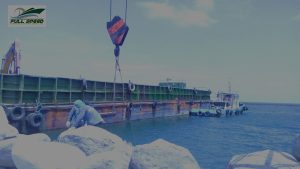
Final Thoughts: 6 Types of LCT Vessels in the Philippines
In conclusion, the Philippines boasts an impressive range of LCT vessels that cater to various industries and needs. From small-sized LCTs ideal for shallow water transport to larger ones designed for heavy cargo, there is a vessel for every purpose. These versatile vessels have revolutionized transportation in the country and have proven their worth in sectors such as construction, mining, and oil exploration.
It’s interesting to note how these LCT vessels have become essential tools in promoting economic growth and development in the Philippines. With their ability to transport large quantities of materials efficiently, they have played a pivotal role in enabling infrastructure projects across the archipelago. Additionally, these vessels offer flexibility by providing easy access to remote areas that are otherwise difficult to reach through traditional means.
Considering the different types of LCT vessels available, it becomes evident that their impact extends far beyond a single industry. The widespread use of these vessels highlights their versatility and adaptability across various sectors. As technology continues to improve and new advancements come into play, we can expect even more specialized types of LCT vessels to emerge in the future, catering to ever-evolving industries and requirements. The continued growth of this sector promises exciting prospects not only for maritime enthusiasts but also for those invested in the progress of Philippine industries as a whole.

